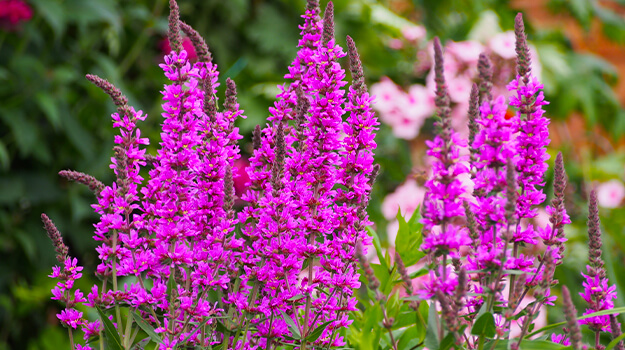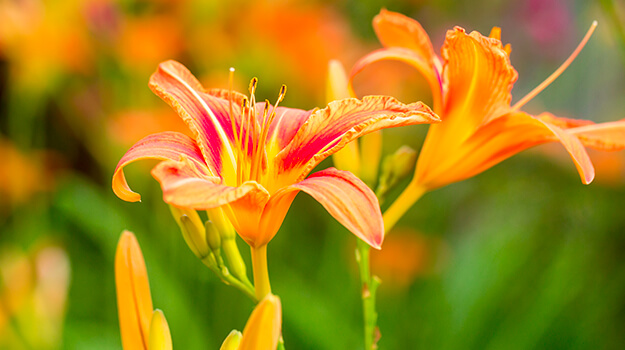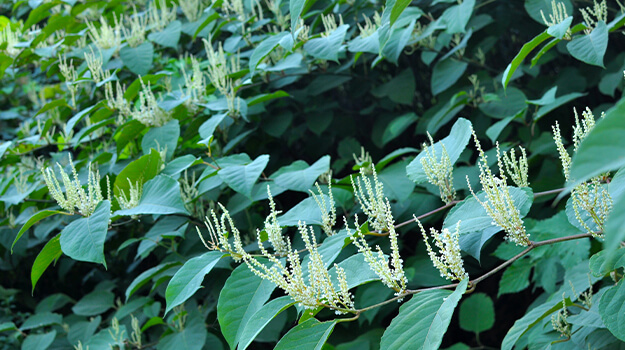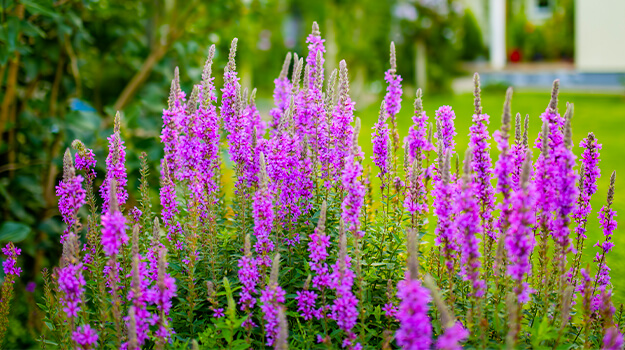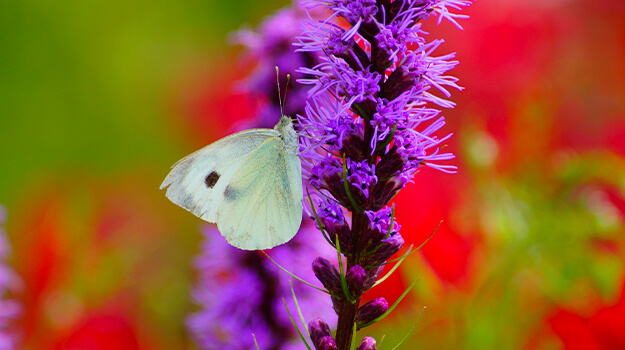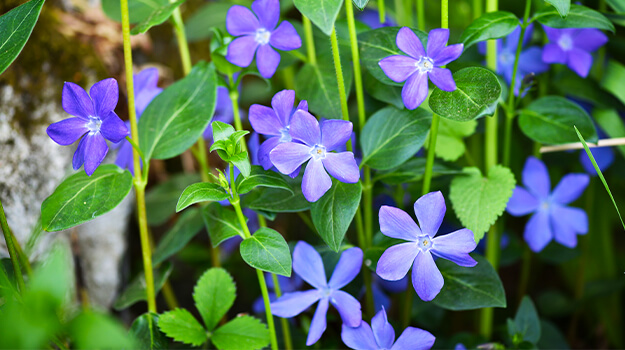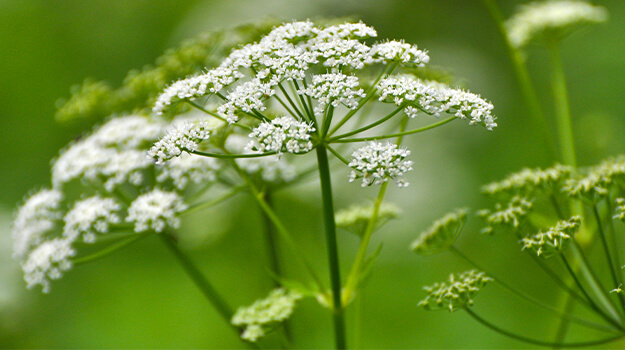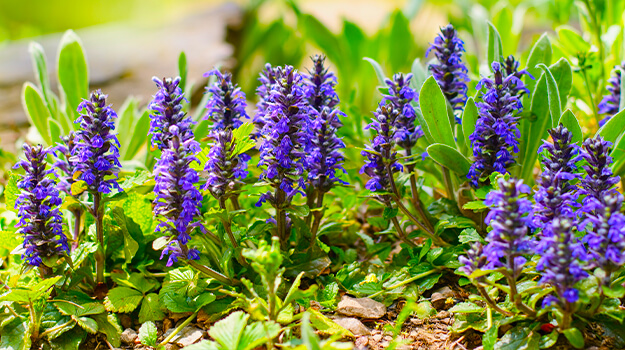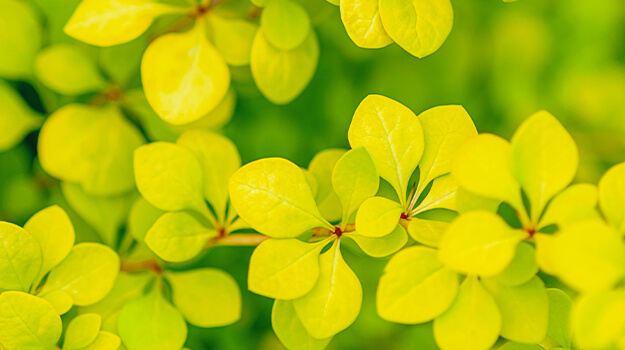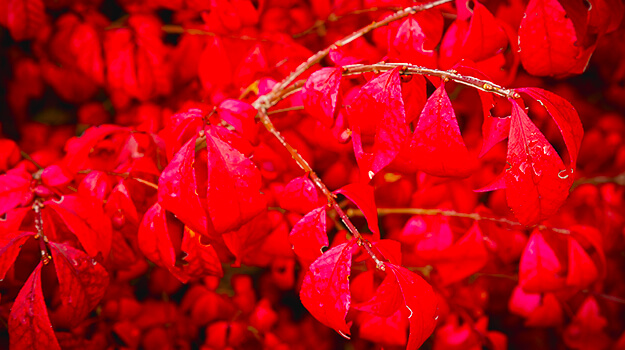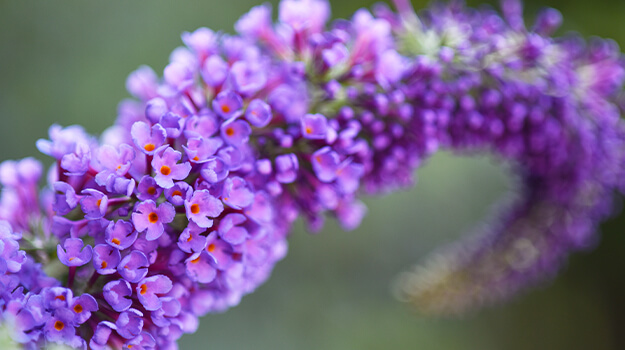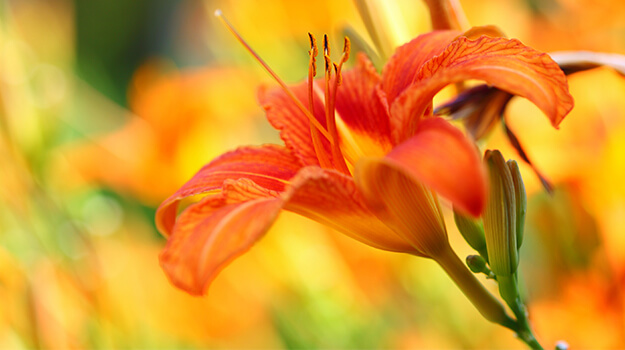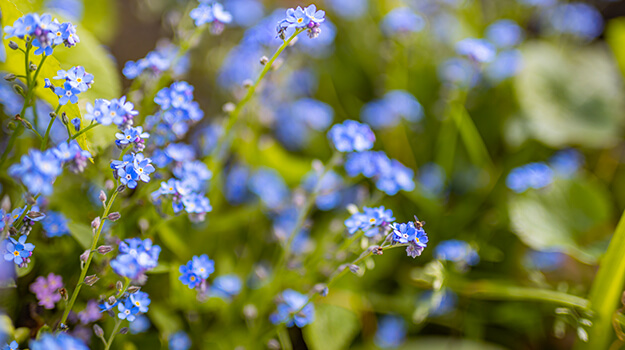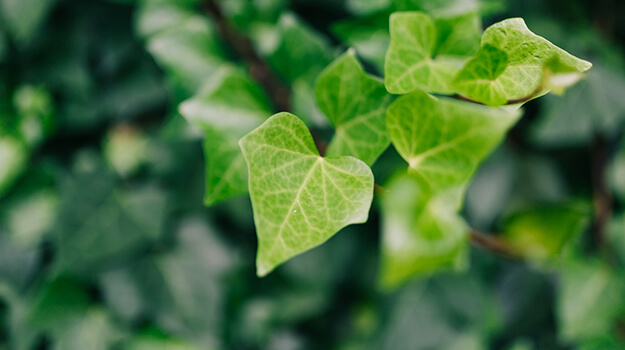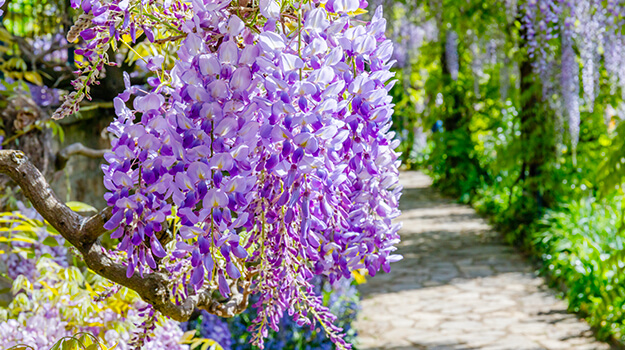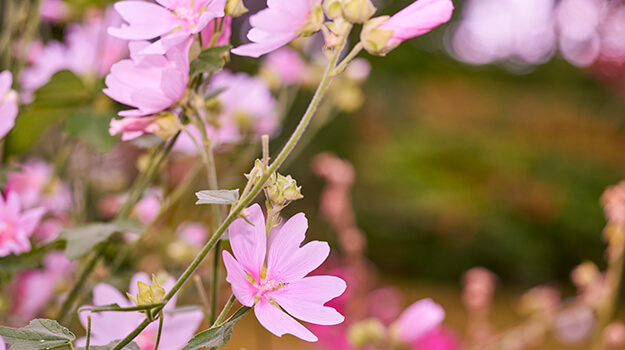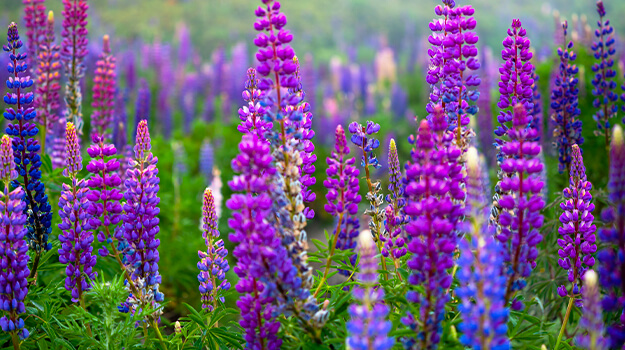- What is the definition of an invasive plant?
- What classifies as invasive?
- What is the most common invasive plant?
- Creeping plants that are difficult to contain
- Suckering shrubs: species to keep an eye on
- Invasive perennials
- Invasive climbing plants
- Think twice before choosing them…
Choosing plants is one of the great joys of gardening. Experts recommend choosing plants that are adapted to the environment and conditions where they are grown, so they can thrive. However, some plants can prove difficult to contain if they are too well adapted.
The problem mainly stems from exotic plants, once imported for their ornamental qualities, but which later proved invasive in their region of adoption. Others are relatively harmless but require more work because they grow by rhizomes or reseed themselves in the wind.
Want more gardening tips? Subscribe to our newsletter to discover our best growing advice, inspiration, landscaping plans and a lot more!
What is the definition of an invasive plant?
An invasive plant is one whose behaviour makes it difficult to contain. It's not necessarily a weed. An invasive plant can be beautiful. Many have even been imported for their ornamental qualities.
However, invasive plants have the nasty habit of propagating very quickly, establishing themselves wherever they want and threatening the survival of neighbouring plants.
Invasive plants can:
- Compete with native plants for water, light, nutrients and space
- Supplant threatened or endangered species
- Degrade wildlife habitats
- Threaten the quality of water
- Speed up the erosion of soils and shores
- Alter soil conditions
- Replace the local vegetation that feeds native wildlife
What classifies as invasive?
International, federal, provincial and state authorities identify species that endanger their ecosystems. They issue advisories, establish regulations and, when necessary, oversee eradication programs to prevent economic, environmental or biological damage.
It's important to note that invasive plants are generally a regional issue. An invasive plant in Quebec doesn't necessarily pose a threat in British Columbia. While some plants, such as Japanese knotweed, may appear on all governments' blacklists, many will only appear in specific regions.
The best example is plants grown as annuals in northern regions that spread intensely to more southern regions. Consult the list of invasive plants in your region to identify them and, if they are present on your property, commit to eradicating them immediately.
What is the most common invasive plant?
How to get rid of an invasive plant like Japanese knotweed
Japanese knotweed is recognized worldwide as one of the most difficult invasive plants to eradicate. Its roots extend deep into the soil and can spread up to 7 metres from the mother plant.
Three years of tarping doesn't always eradicate it. Read our article to learn more: The Japanese knotweed, an invasive species
A great alternative to Japanese knotweed
Polymorphic knotweed: it is spectacular and stays in the spot you give it. Very few suckers will appear over time.
Why the Norway maple threatens our trees
Because it spreads easily, the Norway maple (Acer platanoides) is invasive across much of the Northeast and poses a threat in Canada, Maine, Vermont, New Hampshire and Massachusetts. Its seeds disperse with the wind, allowing it to quickly establish itself in new environments.
What can I use instead of a Norway maple?
Choose one of the many maple trees native to North America.
Purple loosestrife: a formidable invasive plant
Brought to North America in the early 19th century, a single plant can produce over 300,000 seeds and has rhizomes that are nearly impossible to completely eradicate. As early as 1992, the Canadian and U.S. governments started using beetles to control the species. However, purple loosestrife has invaded Canadian wetlands and threatens native species in every U.S. state except Hawaii and Alaska.
Purple loosestrife prevents native flora from regenerating and degrades wildlife habitats at an alarming rate. Even supposedly non-invasive varieties, such as Robert's loosestrife, should be avoided.
Which plant should I choose instead of purple loosestrife?
Liatris has a similar flowering habit and is greatly appreciated by butterflies. Although it occasionally reseeds itself, it is never invasive.
Creeping plants that are difficult to contain
Creeping plants have the advantage of covering hard-to-reach areas, preventing weeds from establishing or even replacing lawns in areas where they’re hard to grow. Be careful, however, with those that are invasive. Once established, they are difficult to stop.
Periwinkle
This ground cover plant (which is actually a European climber) is often used to slow erosion on slopes or as an alternative to lawns. Spreading fast (its stems can reach 2.5 metres), it quickly invaded the forests of the Eastern United States.
Covering the ground completely, it smothers surrounding vegetation and releases substances into the soil that prevent the growth of trees and other native plants. Once established, it is difficult to get rid of.
Two ground cover plants to choose instead of periwinkle: woodland phlox (its flowers resemble those of periwinkle) or perennial geranium.
Goutweed
Also known as "gouty grass," this variegated ground cover was once planted in every shady corner of the yard. Terribly invasive, it is practically impossible to eliminate.
Looking for a variegated ground cover? Choose spotted dead-nettle or brunnera macrophylla instead.
Creeping bugleweed
Creeping bugleweed, or ajuga, escaped from gardens. Its rapid growth and spread make it an invasive exotic species in several U.S. states.
If you're looking for a flowering ground cover, consider spotted dead-nettle. The Lemon Frost variety features variegated foliage in shades of lime green to golden yellow as well as pretty pink flowers.
Suckering shrubs: species to keep an eye on
As for shrubs, their invasive nature is primarily linked to their ability to produce large numbers of suckers. This is particularly the case for many sumacs and rugose roses, false spirea, several lilacs, etc.
In many cases, simply being alert and removing suckers as soon as they appear can contain them. The following shrubs are more threatening.
Barberry or berberis
Barberry plants damage ecosystems by crowding out native plants. Some varieties can also alter soil pH, killing neighbouring plants.
Very popular in Canada, Berberis thunbergii (like Berberis vulgaris) is listed as an invasive plant in most of the American Midwest, where its planting is strongly discouraged.
What shrub should I plant instead of barberry?
Holly is a deciduous shrub whose fruit provides an attractive winter display. Some varieties turn yellow, bronze or burgundy in the fall.
Burning bush
Also very popular in Canadian gardens, Euonymus alatus offers an incomparable spectacle in the fall when its foliage turns scarlet red. It is considered highly invasive, particularly in the northern states (Maine and Minnesota).
What to plant instead of burning bush?
Fothergilla blooms in spring and its leaves turn red and orange in the fall. Staghorn sumac also offers stunning fall colours. Choose a variety that produces very few suckers, such as Tiger Eyes.
Butterfly bush
Butterfly bush (buddleia) is highly invasive when grown in an area with conditions similar to its natural habitat. It is less of a problem in cooler regions, where it behaves more or less like a perennial and starts anew in the spring.
What should I plant to attract butterflies?
In zone 6 or higher, attract butterflies by planting common or tuberous milkweed in your garden. Essential to the survival of monarch butterflies, it is the only plant their caterpillars feed on.
Privet
Privet grows extremely quickly and tolerates pollution well. A problem in much of the Midwest and Northeastern United States, it is not recommended to grow it as it spreads dangerously.
What shrubs to plant for a worry-free hedge?
Boxwood makes beautiful hedges without threatening ecosystems. There are also beautiful flowering options: silverberry, dogwood, forsythia, etc.
Invasive perennials
Gooseneck loosestrife
Its flower, whose curve evokes a goose's neck, is particularly attractive. However, its roots tend to invade the soil where the plant thrives. Growing it in a shaded area helps slow its spread. You can also pull up stems that have migrated out of the flower beds... but it's best to extract all the roots!
Lantana
Grown as an annual in northern regions, lantana is an invasive species in the southernmost U.S. states (Florida, Georgia, California). North of zone 9, it poses no threat, but it escapes from gardens and naturalizes abundantly in warmer zones.
Orange daylily
Orange daylily tends to spread and form dense colonies that threaten ecosystems. It is considered invasive in the Midwest and along the East Coast of the United States.
Lily of the valley
Native to Europe, lily of the valley quickly covers an area with its underground rhizomes and can overwhelm native plants. It is also toxic and can cause skin irritation.
Forget-me-not
Despite its delicate blue flowers, forget-me-not can be a problem. It self-seeds and can cover large areas, replacing native vegetation. Instead, consider Caucasian forget-me-not (Brunnera macrophylla) Jack Frost.
Gypsophila
Popular in bouquets, gypsophila (baby’s breath) produces thousands of seeds and has a taproot that is resistant to drought... and pulling. Once established, it is extremely difficult to get rid of.
It poses a threat to coastal ecosystems in particular. On the American West Coast and in Canada, it is recommended that every effort be made to contain it when it is impossible to eliminate it.
Invasive climbing plants
They quickly cover an old fence and add greenery to a screen or structure. These climbing plants are perfect... until they start climbing trees and crowding out the surrounding vegetation.
Note that these climbing plants remain excellent choices in regions where they are not invasive!
Japanese honeysuckle
This fast-growing climbing plant produces fragrant yellow flowers from June to October. It can grow up to 9 metres tall and is considered an invasive exotic plant. It is banned in several U.S. states. It breaks the branches of large trees and kills smaller ones by encircling them and depriving them of light.
Chinese wisteria
Despite its romantic appearance, Chinese wisteria is extremely aggressive. It's considered an invasive species in 19 states. Instead, opt for Kentucky wisteria Blue Moon, a much less aggressive American cousin.
English ivy
Native to northern Europe, this fast-growing plant, perennial in warmer states, damages trees, brick walls and paths.
Instead, plant Virginia creeper, which is native to the United States. Like English ivy, it can be used as both a climbing plant and a ground cover. It's not invasive, but its rapid growth requires maintenance.
Think twice before choosing them…
This section features plants that don't pose a threat to ecosystems but, when they thrive in their environment, can take over the garden. Containing or removing them can be demanding.
Some reseed themselves spontaneously in the wind, even managing to grow between the slabs of a path or in the gravel. Others have formidable suckers. Depending on your tolerance threshold, you'll see if their reappearance is a blessing... or a curse.
GOOD TO KNOW
A plant can be difficult to contain on your property while it’s struggling to survive on your neighbour's, where soil conditions, light, etc. are different. Sometimes you just have to try it to see how it behaves in your garden!
Plants that can be invasive (but some are easily pulled out):
- Lupines
- Canadian anemone
- False spirea (Sorbaria)
- Mallow (Malva)
- Perennial pansies
- Rugose roses
- Japanese butterbur
- Yellow flag iris
- Leafy spurge
- Beebalm
- Tamarisk
- Creeping grasses (prefer grasses that grow in clumps!)
- Mint (grow it in a pot by itself!)
- Raspberry bushes (prefer varieties that produce few suckers)


